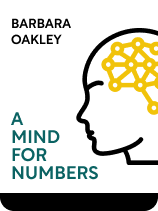

This article is an excerpt from the Shortform book guide to "A Mind for Numbers" by Barbara Oakley. Shortform has the world's best summaries and analyses of books you should be reading.
Like this article? Sign up for a free trial here .
Does your memory need a boost? What techniques can help?
If you want to remember a person’s name, a grocery list, or information for a test at school, certain techniques can come in handy. The books A Mind for Numbers and Moonwalking with Einstein discuss five mnemonic strategies you should add to your memory toolbox.
Read more to learn about these mnemonic strategies.
Five Mnemonic Strategies
What if you need to remember something that, by itself, isn’t all that memorable? Author Barbara Oakley presents a number of tactics to make almost any piece of information easier to remember. We’ll examine these mnemonic strategies and contrast them with Joshua Foer’s from Moonwalking with Einstein.
1. Visual Metaphor Strategy
When you want to remember something, Oakley recommends developing a mental image that symbolizes it. The more vivid you make the mental picture by adding both visual details and other sensory details (sounds, smells, feel, or taste), the more memorable it will be, because of the sensory factor. She suggests making the image comical to leverage the humor factor as well.
For example, suppose you are trying to remember the expression F=ma (Newton’s second law, which states that the force acting on an accelerating object is equal to the object’s mass multiplied by its acceleration). Suppose you also dislike eating asparagus, so you create a metaphorical version of the equation: “filth = moldy asparagus.” Now you visualize a plate of moldy asparagus, complete with the color and texture of the mold, its revolting smell, and the slurping sound that it makes as you scrape it off the plate into the garbage. The more asparagus is on the plate, and the moldier the asparagus is, the more filthy the plate is, so the relationship expressed by F=ma is preserved in the metaphor.
(Shortform note: Foer echoes Oakley’s description of this technique and recommendations for making images more memorable with sensory details and humor. While Oakley presents the visual metaphor as one of several techniques, Foer presents it as the primary basis on which mnemonic strategies are built.)
2. Memory Palace Strategy
According to Oakley, the “memory palace” is a powerful extension of the visual metaphor technique that takes advantage of the spatial factor, and potentially also the story factor, allowing you to memorize lists or whole groups of concepts. First, picture a place that you know well, such as your home or college campus. Imagine yourself moving through the place, interacting with objects. Each object is a visual metaphor for something you need to remember.
For example, suppose you need to memorize the hierarchy of taxonomy for biology class: Kingdom>Phylum>Class>Order>Family>Genus>Species. In your mind’s eye, you are walking across campus when you suddenly bump into the King of England, who happens to be visiting your college that day (Kingdom). Next, you stop at the cafeteria, where you order a Philly steak-and-cheese sandwich (phylum). Then you go to class (class).
After class, you head back to your dorm room, but you have to take a detour because a drill sergeant is parading his troops on the campus lawn and shouting a lot of orders (order). When you arrive at your dorm room, you discover your family has come to visit (family). After your family leaves, you notice that your laundry basket is full of jeans, so you head over to the campus laundry room to wash your jeans (genus). However, in the laundry room, you discover that your jeans are covered with tiny yellow specks (species) that won’t wash off.
| Memory Palace: The King of Mnemonic Strategies Foer discusses this tactic extensively, referring to it both as the memory palace technique and the “method of loci.” He explains that the term “memory palace” is a modern name for the method, while in the earliest descriptions of this technique, each imaginary location where you place a visual metaphor was called a locus (loci is the plural of locus). In Foer’s description, this method seems to be the master technique to which all other methods are subservient. Visual metaphors serve mostly to populate the memory palace, and other techniques can be applied to make the individual metaphors within the palace more memorable, but they all reside within the memory palace. In recent years, a modernized television adaptation of the Sherlock Holmes novels raised public awareness of the memory palace technique, sometimes referring to it as the “mind palace.” |
3. Symbolic Sentences Strategy
If you need to remember a list or sequence, Oakley suggests making up an acronym or a sentence composed of words that start with the same letter as each item in the list. If possible, make the sentence tell a story and/or make it funny, so you can take advantage of the story factor and the humor factor.
For example, suppose you need to memorize the hierarchy of taxonomy for biology class: Kingdom>Phylum>Class>Order>Family>Genus>Species. You could symbolize this hierarchy with the sentence, “King Phillip cleaned orange fungus off Jenny’s spectacles,” where King = Kingdom, Phillip = Phylum, cleaned = class, orange = order, Jenny = genus, spectacles = species.
| Symbolic Sentences as an Aid to Visualization Foer doesn’t mention this technique explicitly. Instead, he focuses on imagery that can be used with the memory palace technique. Even when you need to memorize exact wording, Foer recommends replacing the words with images that you can place in your memory palace. For abstract words that you can’t visualize directly, he discusses techniques such as punning, where you create a play-on-words and visualize something that sounds similar to the word you want to remember. In practice, this has a similar effect to Oakley’s symbolic sentences technique. In our taxonomy example, ‘King Phillip cleaning orange fungus off Jenny’s spectacles’ is a scene you could visualize (and place within a memory palace) more easily than the abstract concept of biological taxonomy. |
4. Song Strategy
Oakley notes that another way to remember something is to make up a song about it.
For example, suppose you know a lot of hymns by heart, including one that begins, “Praise my soul the King of Heaven: To His feet thy tribute bring!” Now you need to remember Newton’s second law of motion for physics class. You could sing, “Force equals mass times acceleration: I shall to class my homework bring!” to the same tune.
According to Oakley, you can use this technique by itself, or in conjunction with the symbolic sentences technique by setting a symbolic sentence to music. If you add hand motions or dance moves to the song, you can make it even more memorable by taking advantage of the movement factor.
(Shortform note: Oakley also notes that many songs for remembering mathematical formulas have already been written and posted on the internet. We did a quick search and found a few of them:
- A Song for the Quadratic Equation
- A Song About the Law of Sines
- A Song About Avagadro’s Number
- A Song About Surface Area)
| Limitations of the Song Technique In discussing the history of memory techniques, Foer points out that songs and poetry were the default method of passing on information for future reference in the ancient world. In this context, he also acknowledges that songs are the most structured form of speech, and therefore the most memorable. However, he does not discuss the use of songs for memorization in the modern world, nor the addition of movements to a song, as Oakley does. Perhaps Foer’s omission of this method highlights one of its limitations: If you’re taking an exam (or competing in a memory tournament, as Foer was), you’re generally not allowed to break out in song or get up and dance around the classroom. Once you learn a song, you may be able to review it silently in your mind, but visual metaphors and memory palaces might be a more natural choice for silent recall. |
5. Personification Strategy
To better understand or remember something, Oakley recommends that you imagine yourself in its place, either literally or metaphorically.
Suppose you are taking a class in fluid dynamics and learning about pipe flow. Try to imagine yourself in the water flowing through the pipe, experiencing changes in pressure, velocity, and elevation in accordance with Bernoulli’s Law.
As a way of personifying numbers, Oakley says she likes to imagine herself at that age. So, imagine you want to remember that the acceleration of gravity is 9.8 m/s2. You start by picturing yourself as a nine-year-old. Then you picture yourself falling down and pointing accusingly at the eight-year-old who tripped you. If you associate falling with gravity, this mental image could help you associate gravity with “nine-point-eight.”
| Personification vs. the Major System for Memorizing Numbers Foer describes personification as a sub-tactic of creating visual metaphors: The more personal your mental images, the easier they are to remember. When used solely for memorization, personification is indeed difficult to distinguish from other ways of implementing the visual metaphor technique. However, as a tool for learning, that is, for understanding new concepts as well as remembering them, personification arguably goes beyond visual metaphors: You don’t just visualize the concept, you relate it to somehow, and that helps you understand it at a deeper level. Foer describes several systems for memorizing numbers, but he doesn’t mention Oakley’s method of personifying a number by mapping it to your age. It could be that Oakley originated this particular tactic, and Foer (who published Moonwalking with Einstein a few years before A Mind for Numbers was published) was not aware of it. The techniques that Foer presents for memorizing numbers involve mapping digits or blocks of digits to mental images that you can place in your memory palace. For example, in the “major system,” first, you memorize a mapping of numerals 0 through 9 to certain consonant sounds, and then you use this mapping to convert numbers into words that you can visualize, adding vowels as needed. Suppose you need to remember that the zip code for North Pole, Alaska is 99705. In the major system, 9 = P, 7 = G, 0 = S, and 5 = L, so 99705 could be represented by the phrase “pipe guys lie.” Now you imagine a bunch of guys lying around at the north pole smoking pipes and telling lies. If you already have the major system memorized, then you can use this mental image to regenerate the number 99705 from the phrase “pipe guys lie.” Compared to this approach, age-based personification may be a little imprecise, at least in certain cases. For example, suppose you need to remember that the density of fresh water is 62 pounds per cubic foot, while the density of seawater is 64 pounds per cubic foot. In your mind’s eye, how much different do you feel at age 64 than at age 62? Or was it 65 and 63? In your imagination, you might feel nearly the same at these ages, and that might make it difficult to recall the exact number when you need it. |

———End of Preview———
Like what you just read? Read the rest of the world's best book summary and analysis of Barbara Oakley's "A Mind for Numbers" at Shortform .
Here's what you'll find in our full A Mind for Numbers summary :
- How to make math and science intuitive
- Strategies for remembering complex concepts more easily
- How to build good study habits and avoid procrastination






